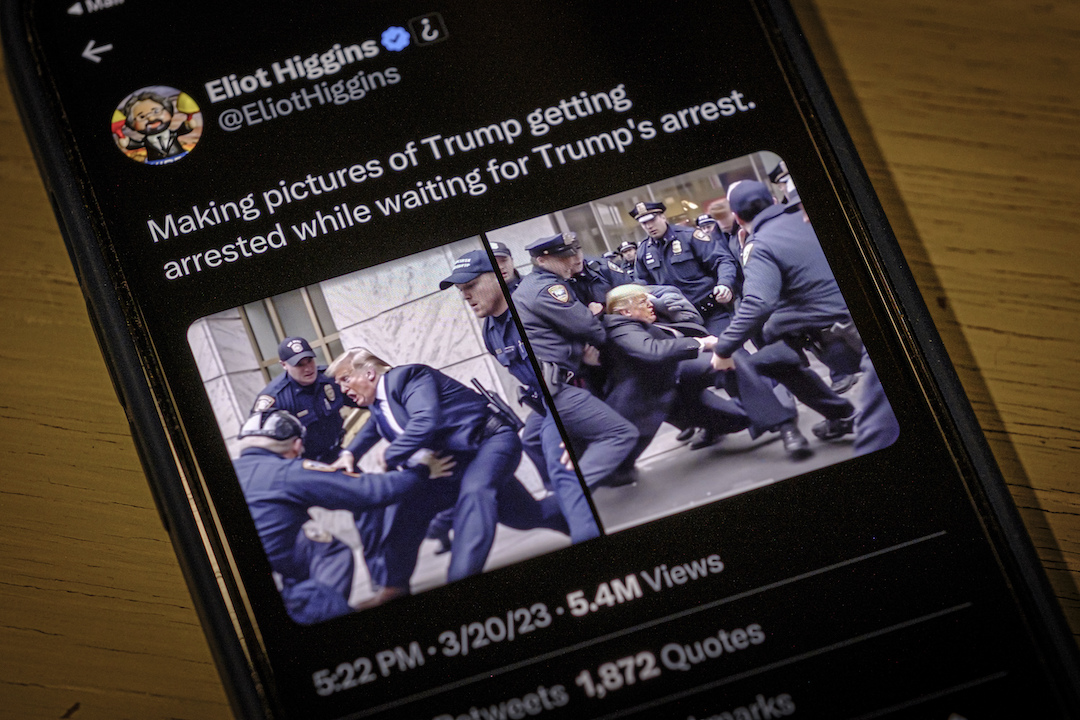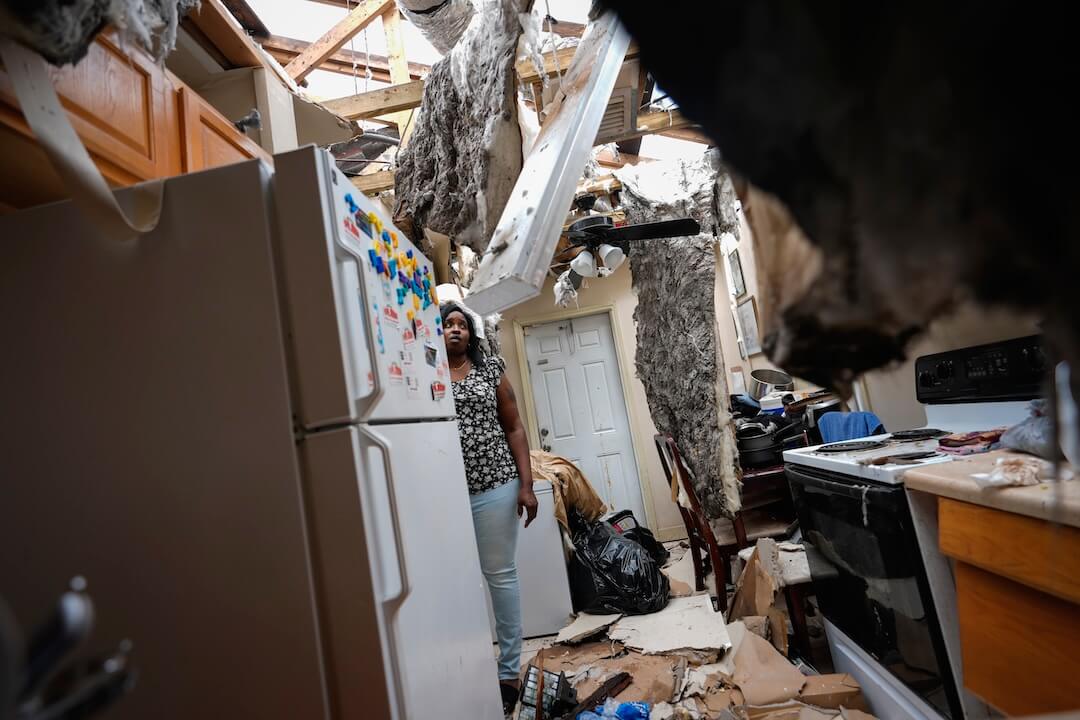Eighty years ago this summer, Nelson Poynter, a 20-year-old reporter for the Indianapolis Star, attended his first presidential convention.
As he covered the 1924 Democratic convention at New York City’s old Madison Square Garden, Poynter, along with most of the reporters there, probably noticed an announcer sitting in a small glass booth broadcasting stories for a new medium called radio.
If 2004 is the year of the weblog, 1924 is remembered as the year radio and broadcasting first came to the conventions.
Every four years journalists experiment with new inventions at presidential conventions. Some historical periods offer more innovation than others do, but the conventions serve as interesting markers about the evolution of news technology.
For example, in 1844 there was a presidential convention in Baltimore where news was sent by telegraph for the first time. By the time of the 1880 conventions, reporters could use two new gadgets called the telephone and the modern typewriter.
During the 1924 conventions the exciting new technology was radio.
The first radio program broadcast from a presidential convention took place on June 10, 1924 at the Republican convention in Cleveland, Ohio. Radio’s big news story during the two-day convention was the nomination of Calvin Coolidge as the Republican presidential nominee.

New York City’s WEAF and WJZ were the largest radio stations airing the broadcast. They were part of two separate and competitive radio networks organized by AT&T and RCA. Approximately 18 stations heard the convention on AT&T affiliated stations and a smaller number listened to RCA stations. Since AT&T controlled most of the wires for radio transmission, the RCA company was forced to use Western Union wires to broadcast the event.
RCA sold radios. Lots of radios. One of the company’s print ads promoting convention coverage also promoted new Radiola radios:
Cheer with the galleries when the delegates march in! No ‘influence’ needed this year for a gallery seat at the big political conventions! Get it all with a Radiola Super-Heterodyne. When the delegates march in –- their banners screaming; when the bands play and the galleries cheer –- be there with a ‘Super-Het.’ Hear the pros and cons as they fight their way to a ‘platform’ for you. Hear the speeches for the ‘favorite son.’ The sudden stillness when the voice of a great speaker rings out. The stamps and whistle and shrill of competitive cheering. Hear the actual nomination of a president. It used to be all for the delegates’ wives and the ‘big’ folks of politics. Now it’s for everybody. Listen in. Get it all! With the newest Radiola.
Wireless Age editor Major J. Andrew White served as the RCA announcer at the convention. The AT&T radio announcer was Graham McNamee. McNamee also covered sports for WEAF and later worked as an announcer for Universal Newsreels.
Erik Barnouw’s, “A Tower in Babel: A History of Broadcasting in the United States to 1933,” describes what it must have been like to look around the convention hall: “Each of the main announcers worked in a small glass box on the platform. For added perspective Carlin (who assisted McNamee) was in a birdcage-like contraption hanging high above the floor among the steel girders of the arena. There were microphones to pick up speeches, band music, pipe organ, and crowd sounds.”
After the Republican convention, all of the radio equipment was moved to New York City for the Democratic convention. None of the radio announcers or engineers could have imagined the challenge before them. Instead of the uneventful, well-organized two-day convention in Cleveland, it took the Democrats 15 days and 103 roll call votes to choose a nominee.
It was a long, hot, crowded convention at the old Madison Square Garden. The Democrats began on June 24 and didn’t finish until July 9. When it was all over, John W. Davis, a former congressman from West Virginia, was chosen as a compromise candidate.
There was a great deal of airtime to fill and the quality of the reports varied, especially at lunch hour.
WJZ assistant Norman Brokenshire sat in for the RCA announcer during lunch. One day, while the regular announcer was away, a fight broke out near Brokenshire and his microphone. Contrary to the convention rule that disturbances would not be broadcast, Brokenshire was caught up in the moment and aired the fight live.
“Spotting it, wanting to do well for the glory of WJZ, I concentrated on the fight and let everything else go by,” Brokenshire later wrote. “I explained that one whole delegation had blustered across the aisle to register a complaint, following with a blow-by-blow eyewitness account of one of the finest donnybrooks I’d ever seen. Delegation signs were banged on opponents’ heads, chairs, and decorations destroyed. I had a ringside seat. I was letting the listening audience in on the fracas…”
Nelson Poynter and the other reporters at the convention may have wondered what the radio listeners were thinking.
One of the more traditional broadcasts during the convention was a speech from a young New York politician named Franklin D. Roosevelt. FDR, who would master the medium of radio as president a decade later, nominated Al Smith for president. This was Roosevelt’s first major political speech since he had contracted polio. Supporting himself with crutches under a bright stage spotlight, the 42-year-old Roosevelt delivered a powerful speech to the delegates at Madison Square Garden and the radio listeners at home.
Convention radio was part of the much larger story of radio during the 1924 presidential campaign. David Sloan, in his book, “Perspectives on Mass Communication History,” reminds us that in the article, “The Radio Election of 1924,” Lewis E. Weeks argues that radio “grew up” during the 1924 presidential campaign.
According to Weeks, the campaign “was of significance because it introduced new techniques in political campaigning, and because it served as a proving ground for the interconnection of radio stations by wire and short wave for the purpose of nationwide broadcasting. By 1928, when the Hoover-Smith contest took place, the major parties had accepted radio as a major campaign tool.”
The broadcast networks that people think of today began after the 1924 conventions. The NBC radio network, which was originally owned by RCA, Westinghouse, and General Electric, was launched in 1926 under the leadership of David Sarnoff.
NBC’s major competitor, the CBS radio network, was founded in 1927 as United Independent Broadcasters. William Paley bought the company the following year, and CBS coverage of presidential conventions began in 1928.
The number of potential radio listeners was so large by 1932 that presidential conventions would never again be designed just for delegates.How popular was radio? Statistics in the book, “Stay Tuned: A History of American Broadcasting,” show that only 4.7 percent of the households in the United States owned a radio in 1924. By 1928 the number had grown to 27.5 percent. When the microphones were set up at the 1932 conventions more than 60 percent of U.S. homes and 250,000 cars were able to tune in to radio news.
The number of potential radio listeners was so large by 1932 that presidential conventions would never again be designed just for delegates. The listeners at home would be the most important part of the convention audience.
Nelson Poynter attended many presidential conventions during his long journalism career, but his first convention in 1924 made a lasting impression. One of the first things he did when he became editor of the St. Petersburg Times in 1939, was to buy a radio station, and six years later Poynter started a political magazine called Congressional Quarterly.
Although radio remained the dominant electronic medium at the conventions until the early 1950s, the transition to television news began in 1940.
In June 1940, NBC’s experimental station W2XBS became the first television station to broadcast from a presidential convention when it aired filmed reports from the Republican convention in Philadelphia.
World War Two put a hold on the commercial development of television; however, by the time Nelson Poynter attended the 1948 conventions a new era in technology and journalism history had begun.
On June 21, 1948, the television networks broadcast their first live reports from a presidential convention when they covered the Republican convention. Philadelphia hosted both the Republican and Democratic parties that summer.
By 1952 the conventions were designed for the visual medium of television. Radio still had a larger audience, but it was clear that the future of campaigning and presidential conventions lay inside small black & white television sets.
Eighty years ago at the 1924 conventions the cutting edge technology was radio.
In 1976, at the time of Nelson Poynter’s last convention, reporters were beginning to hear about a new technology: personal computers.
This year, the big convention technology story is weblogs.
Who knows what will be new at the next presidential convention.





